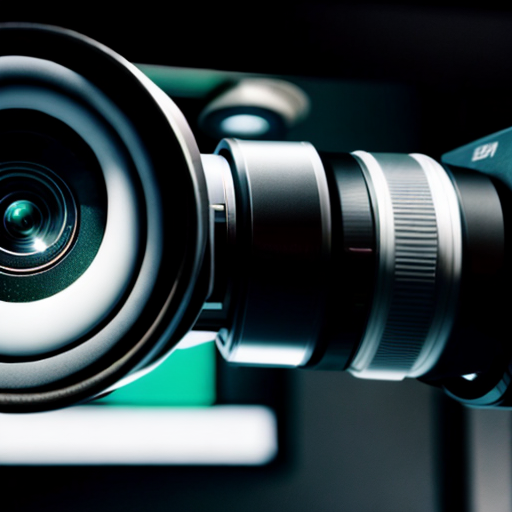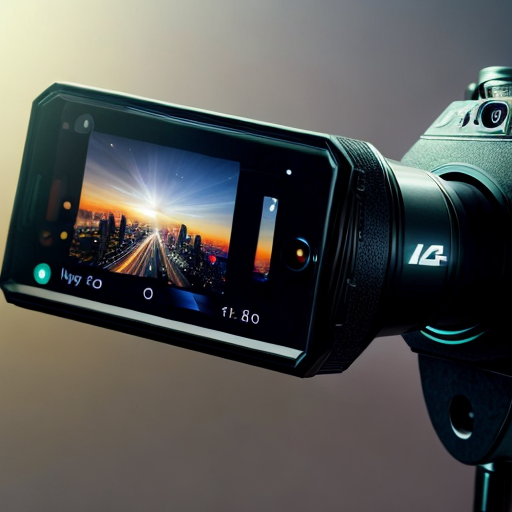Understanding the Basics of Home Security Camera Recording
Alright, folks, let's dive into the fascinating world of home security camera recording! Now, we all know that protecting our humble abodes is serious business, but that doesn't mean we can't have a little fun while doing it. So, picture this: you've got your trusty security cameras set up, ready to capture any shenanigans that might occur. But how do you ensure you're recording all the action without missing a beat? Well, fear not, my friends, for I'm here to guide you through the basics of home security camera recording like a seasoned pro. First things first, make sure you've got the right equipment and a reliable storage system. Nobody wants to end up with grainy footage or worse, a camera that's as useful as a chocolate teapot. So, invest in high-quality cameras and a spacious hard drive to store all those juicy clips. Remember, the more, the merrier! Next, position your cameras strategically, covering all the vulnerable spots around your castle. Think like a sneaky intruder and place them where they'd least expect it. And finally, don't forget to set up a recording schedule that suits your needs. Whether it's 24/7 surveillance or just when you're away, make sure those cameras are rolling when it matters most. With these basics under your belt, you'll be the master of home security camera recording in no time!
Choosing the Right Equipment for Recording Home Security Cameras
An interesting fact about recording home security cameras is that advancements in technology have made it possible to store footage in various ways. In addition to traditional methods like using a digital video recorder (DVR) or a network video recorder (NVR), homeowners can now also utilize cloud-based storage options. This means that even if the physical recording device is damaged or stolen, the footage remains safe and accessible online. Cloud storage offers the convenience of accessing recordings remotely from anywhere with an internet connection, providing an extra layer of security for homeowners.
Alright, my fellow security enthusiasts, let's talk about choosing the right equipment for recording those home security cameras! Now, we all know that having a top-notch surveillance system is crucial for keeping our homes safe and sound. But with so many options out there, it's easy to get overwhelmed. Fear not, my friends, for I'm here to help you navigate this technological maze with a touch of humor. First things first, consider the resolution of the cameras. You don't want footage that's as blurry as your vision before your morning coffee. So, opt for high-definition cameras that capture every detail, from the mischievous squirrel in your backyard to the suspicious package left at your doorstep. Next, think about the storage capacity. Trust me, you don't want to be stuck deleting old clips like a digital Marie Kondo. Invest in a spacious hard drive or a cloud-based system that can handle all your recording needs. And finally, don't forget about the power source. You don't want your cameras to go dark when you need them the most. So, choose cameras that can be powered by a reliable source, whether it's batteries or good old-fashioned electricity. With these tips in mind, you'll be well on your way to choosing the perfect equipment for recording your home security cameras. Happy surveillance, my friends!
Setting Up and Configuring Your Home Security Camera System for Recording

Alright, my fellow security enthusiasts, it's time to roll up our sleeves and tackle the task of setting up and configuring our home security camera system for recording. Now, I know this might sound like a daunting task, but fear not, for I'm here to guide you through it with a sprinkle of humor. First things first, let's talk about camera placement. Think like a sneaky ninja and strategically position your cameras in areas that need the most protection. From the front door to the backyard, make sure you've got all your bases covered. And remember, angles are everything! Avoid placing cameras too high or too low, unless you want to capture footage of your neighbor's nostrils or the top of your own head.
Once you've got your cameras in place, it's time to configure them like a tech-savvy wizard. Most cameras come with user-friendly software or apps that allow you to customize settings to your heart's content. Adjust motion sensitivity levels so you're not bombarded with notifications every time a leaf falls, but still catch any suspicious activity. And don't forget to set up recording schedules that fit your lifestyle. Whether it's 24/7 surveillance or just when you're away, make sure your cameras are capturing the action when it matters most.
Now, let's talk about storage, my friends. You don't want to end up with a camera system that's as useful as a chocolate teapot when it comes to recording. Invest in a reliable storage solution, whether it's a spacious hard drive or a cloud-based system. Trust me, you don't want to be stuck deleting old clips like a digital Marie Kondo. And while we're on the topic of storage, make sure you regularly back up your footage. You never know when you might need that video evidence of your dog stealing your socks or your cat attempting a daring escape.
Last but not least, let's not forget about the importance of securing your camera system itself. The last thing you want is for a tech-savvy intruder to hack into your cameras and turn your home into a reality show. So, make sure you change default passwords, keep your firmware up to date, and consider adding an extra layer of security with encryption or two-factor authentication. With these steps in place, you'll be well on your way to setting up and configuring your home security camera system for recording like a pro. Happy surveillance, my friends!
Best Practices for Recording and Managing Home Security Camera Footage
Fun fact: Did you know that you can easily record your home security camera footage using a variety of devices? Many modern security cameras come with built-in storage options, such as SD cards or cloud storage, allowing you to automatically record and store video footage. Additionally, you can connect your camera to a digital video recorder (DVR) or network video recorder (NVR) for more extensive recording capabilities. So, whether you want to keep an eye on your mischievous pets or capture unexpected moments, recording your home security camera has never been easier!
Alright, my vigilant friends, let's talk about the best practices for recording and managing your home security camera footage. Now, we all know that having a camera system is only half the battle. The real magic happens when we effectively utilize and manage the footage we capture. First and foremost, make sure you regularly review your recordings. Don't let them gather digital dust in the depths of your storage. Take the time to analyze the footage, spot any suspicious activity, and take necessary action. Additionally, consider setting up alerts or notifications for specific events, such as motion detection or tampering with the cameras. This way, you'll be instantly alerted to any potential threats. And let's not forget about organization! Keep your footage organized and labeled, so you can easily find what you need when the time comes. Whether it's creating folders by date or categorizing clips by specific areas, a little organization goes a long way. Lastly, always have a backup plan. Invest in redundant storage options or consider cloud-based solutions to ensure your footage is safe even if your physical storage fails. With these best practices in mind, you'll be a master of recording and managing your home security camera footage in no time. Stay vigilant, my friends!

